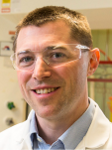Antibacterials, bacterial small molecule interactions and quorum sensing

University of Cambridge
“Antibacterials, bacterial small molecule interactions and quorum sensing” has become a highly active research area due to the basic science challenge and the ever-increasing problems with antimicrobial resistance.
Potential topics for manuscripts include, but are not limited to:
- Discovery, investigation and/or mechanism of antibacterial molecules
- Discovery, investigation and/or mechanism of molecules that are involved in or modulate bacterial signaling/quorum sensing
- Synthesis of antibacterial molecules
- Library synthesis
Natural and redesigned wasp venom peptides with selective antitumoral activity
- Marcelo D. T. Torres,
- Gislaine P. Andrade,
- Roseli H. Sato,
- Cibele N. Pedron,
- Tania M. Manieri,
- Giselle Cerchiaro,
- Anderson O. Ribeiro,
- Cesar de la Fuente-Nunez and
- Vani X. Oliveira Jr.
Beilstein J. Org. Chem. 2018, 14, 1693–1703, doi:10.3762/bjoc.14.144

Defining the hydrophobic interactions that drive competence stimulating peptide (CSP)-ComD binding in Streptococcus pneumoniae
- Bimal Koirala,
- Robert A. Hillman,
- Erin K. Tiwold,
- Michael A. Bertucci and
- Yftah Tal-Gan
Beilstein J. Org. Chem. 2018, 14, 1769–1777, doi:10.3762/bjoc.14.151

Synthesis of a leopolic acid-inspired tetramic acid with antimicrobial activity against multidrug-resistant bacteria
- Luce Mattio,
- Loana Musso,
- Leonardo Scaglioni,
- Andrea Pinto,
- Piera Anna Martino and
- Sabrina Dallavalle
Beilstein J. Org. Chem. 2018, 14, 2482–2487, doi:10.3762/bjoc.14.224
Impact of Pseudomonas aeruginosa quorum sensing signaling molecules on adhesion and inflammatory markers in endothelial cells
- Carmen Curutiu,
- Florin Iordache,
- Veronica Lazar,
- Aurelia Magdalena Pisoschi,
- Aneta Pop,
- Mariana Carmen Chifiriuc and
- Alina Maria Hoban
Beilstein J. Org. Chem. 2018, 14, 2580–2588, doi:10.3762/bjoc.14.235

Targeting the Pseudomonas quinolone signal quorum sensing system for the discovery of novel anti-infective pathoblockers
- Christian Schütz and
- Martin Empting
Beilstein J. Org. Chem. 2018, 14, 2627–2645, doi:10.3762/bjoc.14.241

The design and synthesis of an antibacterial phenothiazine–siderophore conjugate
- Abed Tarapdar,
- James K. S. Norris,
- Oliver Sampson,
- Galina Mukamolova and
- James T. Hodgkinson
Beilstein J. Org. Chem. 2018, 14, 2646–2650, doi:10.3762/bjoc.14.242
Non-native autoinducer analogs capable of modulating the SdiA quorum sensing receptor in Salmonella enterica serovar Typhimurium
- Matthew J. Styles and
- Helen E. Blackwell
Beilstein J. Org. Chem. 2018, 14, 2651–2664, doi:10.3762/bjoc.14.243

Synthesis and biological evaluation of 1,2-disubstituted 4-quinolone analogues of Pseudonocardia sp. natural products
- Stephen M. Geddis,
- Teodora Coroama,
- Suzanne Forrest,
- James T. Hodgkinson,
- Martin Welch and
- David R. Spring
Beilstein J. Org. Chem. 2018, 14, 2680–2688, doi:10.3762/bjoc.14.245
Synthesis of pyrrolidine-based hamamelitannin analogues as quorum sensing inhibitors in Staphylococcus aureus
- Jakob Bouton,
- Kristof Van Hecke,
- Reuven Rasooly and
- Serge Van Calenbergh
Beilstein J. Org. Chem. 2018, 14, 2822–2828, doi:10.3762/bjoc.14.260
Protein–protein interactions in bacteria: a promising and challenging avenue towards the discovery of new antibiotics
- Laura Carro
Beilstein J. Org. Chem. 2018, 14, 2881–2896, doi:10.3762/bjoc.14.267

Repurposing the anticancer drug cisplatin with the aim of developing novel Pseudomonas aeruginosa infection control agents
- Mingjun Yuan,
- Song Lin Chua,
- Yang Liu,
- Daniela I. Drautz-Moses,
- Joey Kuok Hoong Yam,
- Thet Tun Aung,
- Roger W. Beuerman,
- May Margarette Santillan Salido,
- Stephan C. Schuster,
- Choon-Hong Tan,
- Michael Givskov,
- Liang Yang and
- Thomas E. Nielsen
Beilstein J. Org. Chem. 2018, 14, 3059–3069, doi:10.3762/bjoc.14.284






































































































